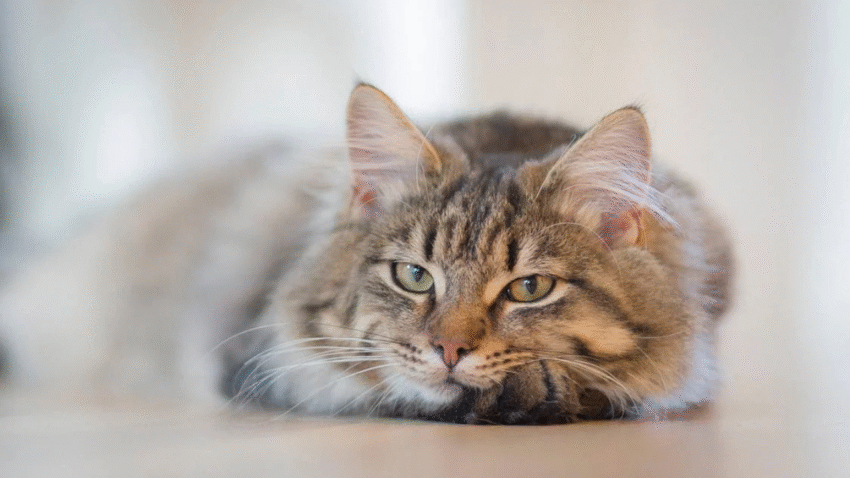Introduction
Bringing home a new kitten and planning to raise them indoors? Great choice! Indoor cats tend to live longer, safer lives—but they need the right environment and stimulation to stay healthy and happy. In this step-by-step guide, you’ll learn how to prepare your kitten for life as an indoor cat, from setting up your space to supporting their physical and mental needs as they grow.
Why Indoor Living Is Better for Cats
Keeping your cat indoors reduces exposure to:
- Cars and road accidents
- Predators and aggressive animals
- Diseases, parasites, and poisons
- Getting lost or stolen
Indoor cats live longer and face fewer emergencies. However, without proper enrichment and care, indoor life can become boring or stressful. That’s why it’s essential to prepare your kitten early on for a safe, stimulating indoor lifestyle.
Step-by-Step Guide to Raising a Happy Indoor Kitten
Step 1: Kitten-Proof Your Home
Before your kitten arrives, do a full safety check:
- Secure loose wires, cords, and blinds to prevent chewing or tangling.
- Keep household cleaners, human medications, and small choking hazards locked away.
- Block off small gaps behind appliances or furniture where a curious kitten might get stuck.
- Remove toxic plants like lilies, pothos, and aloe from your space.
A kitten-safe environment lays the groundwork for worry-free indoor living.
Step 2: Set Up a Dedicated Kitten Space
Create a quiet area with everything your kitten needs to feel safe and comfortable, including:
- A cozy bed or soft blanket
- A litter box placed away from food and water
- Food and water dishes
- A few toys and scratching surfaces
This space helps your kitten adjust gradually to their new home without being overwhelmed.
Step 3: Introduce Them to the Home Slowly
Don’t give your kitten full access to every room on day one. Instead:
- Start with one or two rooms and gradually expand their territory.
- Supervise their exploration to prevent accidents.
- Keep doors to unsafe or off-limits areas closed at all times.
Slow introductions help your kitten build confidence and comfort in their indoor world.
Step 4: Provide Plenty of Stimulation
Indoor kittens need enrichment to stay active and prevent boredom. Include:
- Climbing structures like cat trees or wall shelves
- Interactive toys like wand toys, puzzle feeders, and catnip mice
- Window perches for birdwatching and visual stimulation
- Daily play sessions to burn energy and build your bond
A bored cat may scratch furniture, overeat, or develop behavioral issues—so keep things interesting!
Step 5: Create a Routine
Cats thrive on routine. Build daily patterns around:
- Mealtimes—feed your kitten at the same times each day
- Playtime and rest—establish regular play, followed by calm wind-down periods
- Litter box cleaning—scoop daily and clean thoroughly once a week
A predictable routine helps your kitten feel safe and secure in their environment.
Step 6: Reinforce Indoor Boundaries
From an early age, train your kitten to stay away from doors and windows. You can:
- Use baby gates, closed doors, or screen guards to block unsafe exits
- Distract and redirect when they linger near exits
- Never reward door-dashing behavior with access to the outside
Keeping these boundaries firm early helps prevent escape attempts as your kitten matures.
Step 7: Visit the Vet and Discuss Indoor Health Needs
Indoor cats still need veterinary care, including:
- Vaccinations, even without outdoor exposure
- Parasite prevention for fleas and worms
- Spaying or neutering, usually around 4–6 months of age
- Dental care and weight checks, which are crucial for indoor cats prone to inactivity
A good vet will help you stay on top of your kitten’s health throughout every stage of life.
Common Mistakes to Avoid
1. Assuming Indoor Cats Don’t Need Exercise
Indoor kittens still need plenty of movement and stimulation. Skipping playtime can lead to obesity or destructive behavior.
2. Letting Them Outside “Just for a Bit”
Letting your kitten out—even once—teaches them that the outdoors is an option. This makes future escapes more likely.
3. Overfeeding Out of Boredom
Indoor cats burn fewer calories than outdoor cats. Follow feeding guidelines, and avoid free-feeding unless using a slow feeder or puzzle toy.
4. Forgetting About Mental Enrichment
A mentally unstimulated kitten may become anxious or act out. Offer varied toys, puzzles, and window views to keep their mind active.
5. Not Kitten-Proofing Thoroughly
Don’t underestimate your kitten’s curiosity. Always double-check for small spaces, cords, and hazards before allowing unsupervised time.
Extra Tips & Recommendations
Tip 1: Use Cat TV or Bird Videos
Playing nature videos on a screen can entertain and mentally stimulate your kitten, especially if they don’t have access to windows.
Tip 2: Try Clicker Training
Clicker training is a great way to teach your kitten tricks, commands, or even to walk on a leash. It provides both mental and physical activity.
Tip 3: Rotate Toys Weekly
Keep your kitten’s interest by rotating toys every few days. Reintroducing a “new” toy makes it feel exciting again!
Conclusion
Raising your kitten as an indoor cat is one of the best decisions you can make for their safety and longevity. With the right environment, routines, and enrichment, indoor life can be just as adventurous and fulfilling as the great outdoors. Start early, stay consistent, and watch your kitten thrive in the home you’ve carefully prepared for them.
